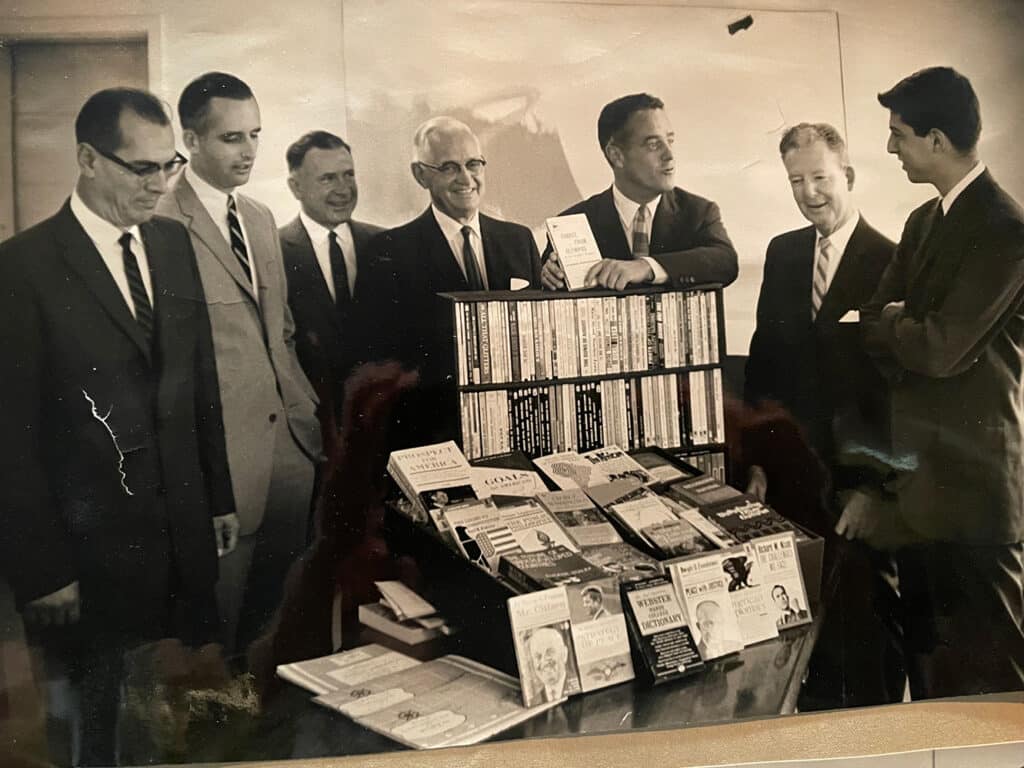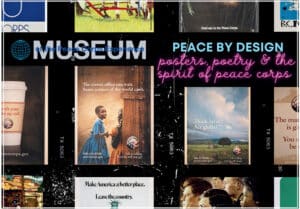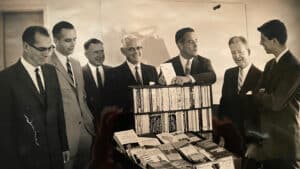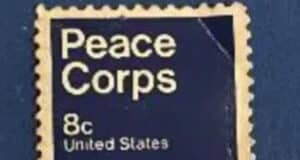
If you had no smart phone, no laptop, no internet, and you had to walk, bike or ride a horse three villages away to make a call or post an aerogram, what to do at night? Turn up the wick on your kerosene lantern and pull your paperback copy of J.D. Salinger’s Nine Stories from your library. Yes, for the first several years of Peace Corps, Sarge Shriver’s staff shipped to almost every Peace Corps site a curated library of about 200 books, a moveable post-graduate world study assignment.
Not long after the first flights of Peace Corps volunteers landed in Africa and Latin America, Peace Corps began shipping a library of books to every volunteer in the field. They were called booklockers. The first shipments of books came in metal-rimmed sea trunks, which were turned into furniture and the books became neighborhood libraries.
“We all got these trunks of books, a whole lot of different books,” says Ned Chalker, who arrived in Titiribi in Colombia’s coffee and coal mining regions of Antioquia Department in 1961. Chalker used his booklocker as a coffee table.
Many of Peace Corps’ accomplished writers—Paul Theroux, Marnie Mueller, John Coyne, Mary-Ann Tirone Smith, Philip Margolin, Jeanne d’Haem among them—depended on them. President Jimmy Carter’s mother, Lillian, wrote home from India that she stole six titles out of a shared booklocker. “I hid them so nobody would look at the words before I did. I real last night as long as I could hold my eyes open…”
Chalker didn’t have much time for reading because his community development assignment involved riding his horse from town to town to attend meetings in the dark of night. “I needed to talk to people to find out what they wanted,” he said. Most meetings eventually adjourned to a local tienda. “You couldn’t leave until all of the others had passed out.”
The agency turned to sending the books in a handsome reinforced cardboard box of two shelves in a slipcase. Each booklocker contained about the same titles. The 1964 list included Homer’s The Odyssey, Mohammed M. Pickthall’s The Meaning of the Glorious Koran, The Burl Ives’ Songbook, Ruth Benedict’s Patterns of Culture, Rachel Carson’s pioneering Silent Spring, Dr. Benjamin Spock’s Baby and Child Care, and James Baldwin’s Nobody Knows My Name. Chinua Achebe’s Things Fall Apart, and other fiction by Twain, Heller, Swift, Vidal, Hemingway, and Steinbeck were on a lengthy fiction list.
Chalker’s books arrived in Colombia in this small trunk. Before he left for his Maryland home two years later, he filled it with keepsakes, his all-weather ruana and other treasures of a life in Colombia’s mountains. Sixty years later he gave his trunk to the Museum of the Peace Corps Experience, a nonprofit affiliate of the NPCA. If you have something you brought home from your Peace Corps service—a pair of shoes, a traditional shirt, a farmer’s hand-carved winnowing paddle, a treasured dress or piece of pottery given by a host-country neighbor—that you believe deserves to be preserved for America and the world to enjoy forever, search Museum of the Peace Corps Experience, click on “Objects” or “Stories” and follow the directions for submission.





